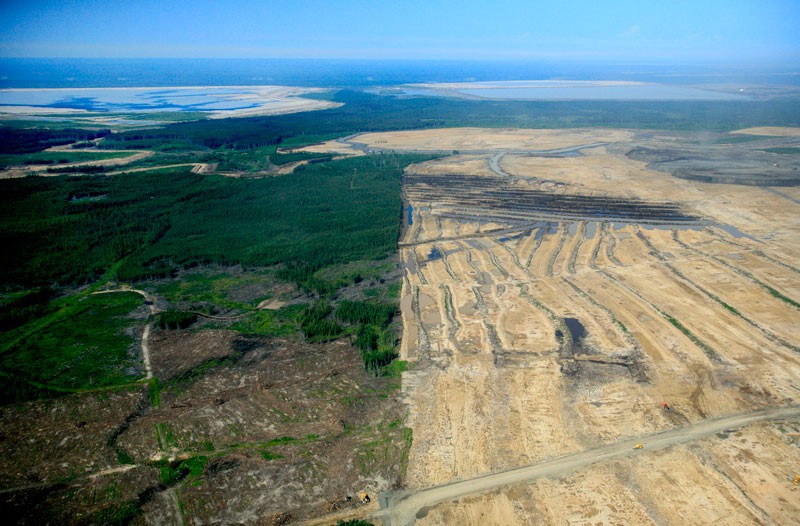
For over a century now, the Lubicon Cree’s rights have not been protected or respected. For decades the Lubicon have led local, national, and international lobbying efforts to fight for what is inherently theirs and to protect their right to their land and to clean air and good water. But despite years of raising awareness and increasing exposure, the Lubicon people still wait for justice.
1899/1900: Living in an isolated and inaccessible area, the Lubicon are missed by treaty commissioners and therefore do not sign Treaty 8. No treaty has been signed with the Lubicon to date.
1939/1940: The Lubicon are visited by Indian Affairs officials who recognize them as a separate, distinct Indigenous society and who promise them a reserve on the shores of Lubicon Lake.
1952: The discovery of oil on Lubicon territory motivates the Government of Alberta to question the federal government about the reserve.
1971: To facilitate resource extraction, Alberta begins building an all-weather road into Lubicon territory without Lubicon consent. The federal government claims the Lubicon are “merely squatters on Provincial crown land with no land rights to negotiate.”
1975: The Lubicon attempt to file a caveat – a notice that land title is contested – but Alberta refuses to accept it. The matter goes to court.
1977: A court ruling in a similar case indicates the law is clearly in favour of the Lubicon. Premier Lougheed’s government responds by passing a bill that rewrites the law governing caveats and makes it retroactive to a time before the Lubicon attempted to file the caveat. The Lubicon case is dismissed.
1979: The all-weather road is completed. Resource exploitation activity explodes.
1980/1981: The Lubicon take federal court action requesting a declaratory judgment regarding Lubicon land rights. Alberta declares the community to be “an official provincial hamlet and therefore no longer available for purposes of establishing an Indian reserve.” The province fraudulently solicits people for a land tenure program. Residents face fines and demolition orders if they don’t comply.
1982: The Lubicon apply for an emergency court injunction to prevent further resource extraction in their area pending resolution of their 1980 land rights court case.
1983: A fact-finding mission by the World Council of Churches concludes that “government & multinational oil companies have taken actions that could have genocidal consequences.”
1985/1986: Out of 21 Lubicon pregnancies, 19 result in stillbirths or miscarriages.
1986: The Lubicon announce a boycott of the 1988 Winter Olympics in Calgary. In support, 30 museums worldwide refuse to lend artifacts to the game’s Indian art exhibit sponsored by Shell Oil.
1987: After three years of study, a UN Human Rights Committee states that the Lubicon cannot achieve effective legal or political redress in Canada and instructs Canada to do no further irreparable damage to the Lubicon pending a hearing of human rights violations. Canada ignores the ruling.
1988: After 14 years, the Lubicon withdraw from court action and assert sovereignty over their territory. A peaceful blockade stops all oil activity for six days, but armed RCMP officers forcibly remove the barricades. Alberta Premier Don Getty meets with Chief Ominayak, which leads to the “Grimshaw Accord,” an agreement for a 243-square kilometre reserve.
1990: The UN charges Canada with a human rights violation under the International Covenant on Civil and Political Rights, stating that “recent developments threaten the way of life and culture of the Lubicon Lake Cree.”
1994: A boycott of Daishowa gains the support of 47 companies representing over 4,300 retailers, who commit to cease buying Daishowa paper products. Daishowa does not clear cut on Lubicon land while the boycott is in effect. Four years later, Daishowa agrees not to log or buy wood cut on Lubicon land until the land rights are settled. The Lubicon and supporters call off the boycott.
2012: The Lubicon’s land claim remains outstanding. The Government of Alberta continues to lease out Lubicon territory to multinational corporations that exploit and contaminate the land.
Source: “A chronology of the Lubicon Lake Cree land rights struggle” (abridged) tao.ca/~fol/pa/luback.htm#chronology


